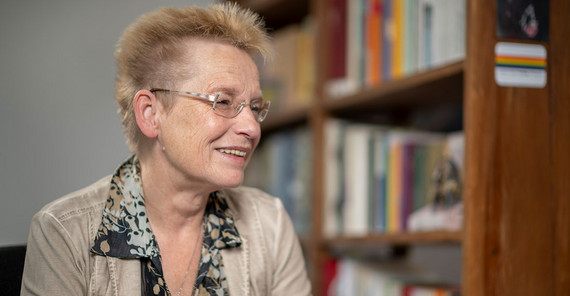Potsdam specialist in German studies PD Dr. Judith Klinger could not resist him either – as a researcher, of course. She wrote one of the first German-language introductions to Robin Hood. Her academic interest in the English outlaw was sparked during her studies when the TV series “Robin of Sherwood” by Richard Carpenter was broadcast. “It was a very clever, historically well-researched TV series remarkably close to the medieval texts. The special thing about it was that Robin Hood was not a person but a role.” After all, he is also known to his fans as a master of masquerade.
Klinger considers the dressing up to be one of the things that make Robin Hood so appealing and thus justifies his special position outside the order. He is sometimes a merchant, sometimes a clergyman, a bounty hunter, or an old woman when he goes out into the world beyond Sherwood Forest. In doing so, he crosses borders unrecognized. “Robin’s identity consists of spatial and social mobility. This challenges the status society with something radical because he takes on roles that are otherwise only innate or inherited,” Klinger says.
Besides the masquerade, the master archer settled in a characteristic place - the forest. In the Middle Ages, this was a complex space legally, socially, and economically, but it was also associated with mythical notions of an impenetrable place outside society. “The forest, in its primeval, earthy nature, makes Robin Hood a representative of the order that is visible in nature and that stands against the culturally created civilizing order,” Klinger says. Robin appears as an alternative king of the forest, in contrast to the real regent, who rules over the forest of reality by royal forest law. The "Greenwood" is portrayed as a paradisiacal place of eternal summer, as an antithesis to medieval reality. The texts did not show the burdensome life as an outlaw and outsider, for example in winter.
Robin Hood, however, would be nothing without his companions! The ingrained community of the “merry men” impresses the readers with their virtues of faithfulness and loyalty. “Of course, there are fervid confrontations, but as soon as a conflict from outside is threatening them, they overcome their differences,” Klinger says. With each new story about the outlaw, more of his equally iconic companions join him. First it is “Little John”, later “Much, the Miller‘s Son” and „Friar Tuck“. The companions live the ideal of a just community outside of the law, of common hierarchies, and kinship systems. Originally, it was also a homosocial community, as Dr. Klinger explains, because “Maid Marian” was not part of the stories’ core group from the very beginning. Her character only emerged when the Robin Hood performances were introduced at the May Games. In the stories about Robin, she is a bridge figure to the May Queen of the Games.
“It is quite interesting that Marian was played by men in the theater performances. In a text from the 17th century, when she enters the stage for the first time, she is disguised as a page and thus part of the homosocial pattern,” Klinger explains.
As the noblest of robbers, Robin Hood combines a number of qualities that have attracted people throughout the ages. Because the law is not always fair, he takes it into his own hands and ensures justice. But: “The fact that Robin takes from the rich and gives to the poor was only added to the story later,” she says. And something else only developed over time: Robin Hood was not yet a noble in the earliest texts. It was not until the end of the 16th century that playwright Anthony Munday turned him into a nobleman. According to Klinger, this change was not surprising as the character embodied many noble values. “It was only a small step to declare him a nobleman who had experienced injustice and had to retreat into the woods for a while. This actually happened many times in reality: Nobles who were ostracized for whatever reason, moved into the woods, and later returned.”
There are many reasons why Robin Hood is so popular. But who was he, and where did he come from? Some historians are still searching for a historical role model. Others consider the stories about him to be pure fiction. Dr. Klinger, on the other hand, suggests, “We should rather examine the historical events and the environment to find out what in the stories corresponds to the historical circumstances.” The truth is: “The early Robin Hood has no verifiable origin.” He is story material and fulfills certain needs. The significance he has for enthusiastic Robin Hood fans is clear: He fascinates them and has done so for generations.
The Researcher
PD Dr. Judith Klinger has been research assistant and lecturer at the Chair for German Medieval Studies of the Department for German Literature and Language since 1995. She completed her habilitation here in 2017.
Email: judith.klingeruuni-potsdampde
Further reading
Judith Klinger: Robin Hood: Auf der Suche nach einer Legende (In Search of a Legend), Darmstadt 2015
This text was published in the university magazine Portal Wissen - Eins 2024 „Bildung:digital“ (PDF).

